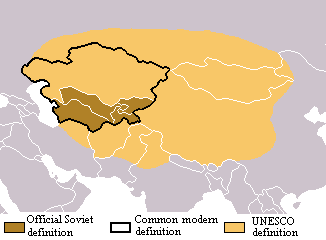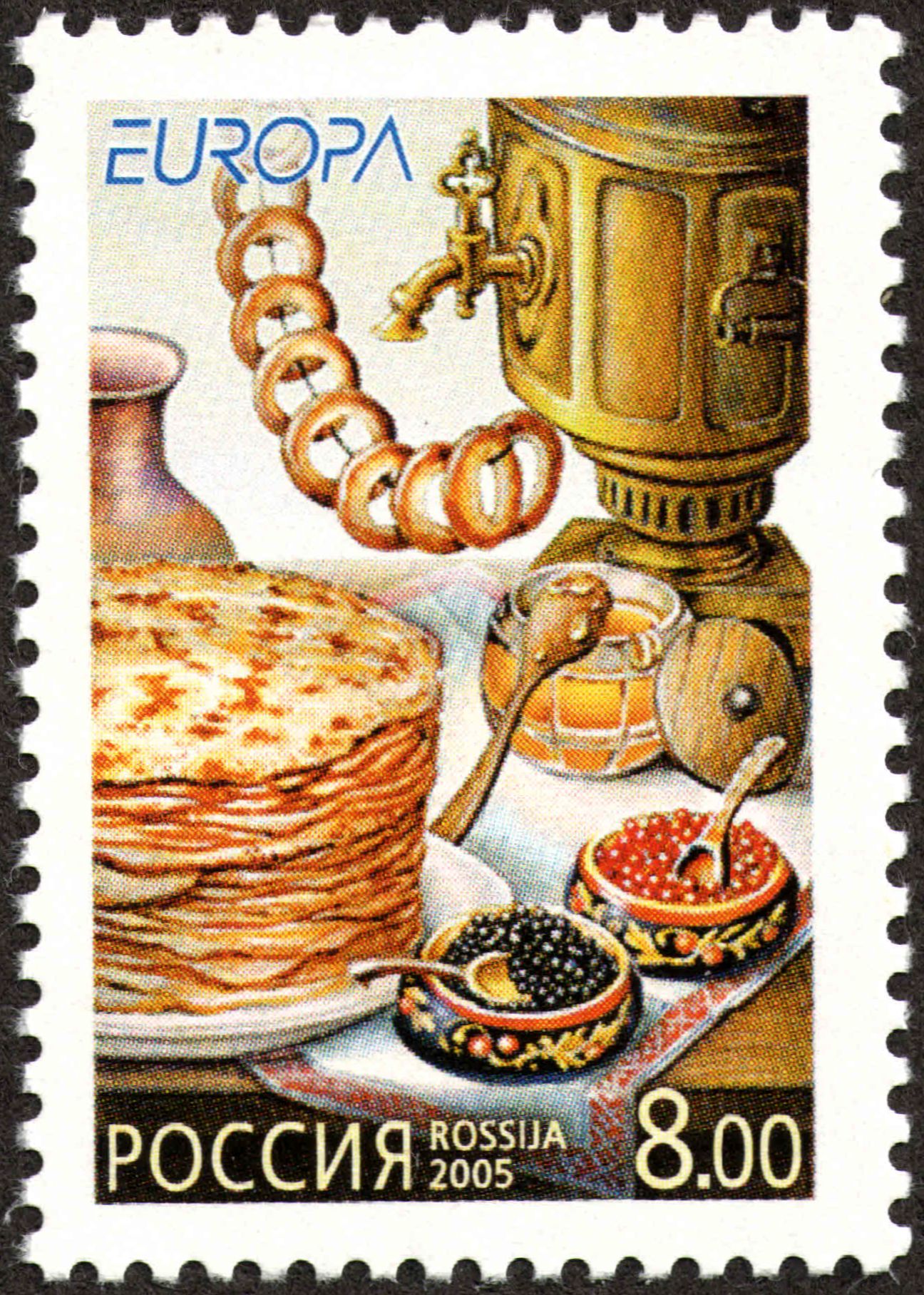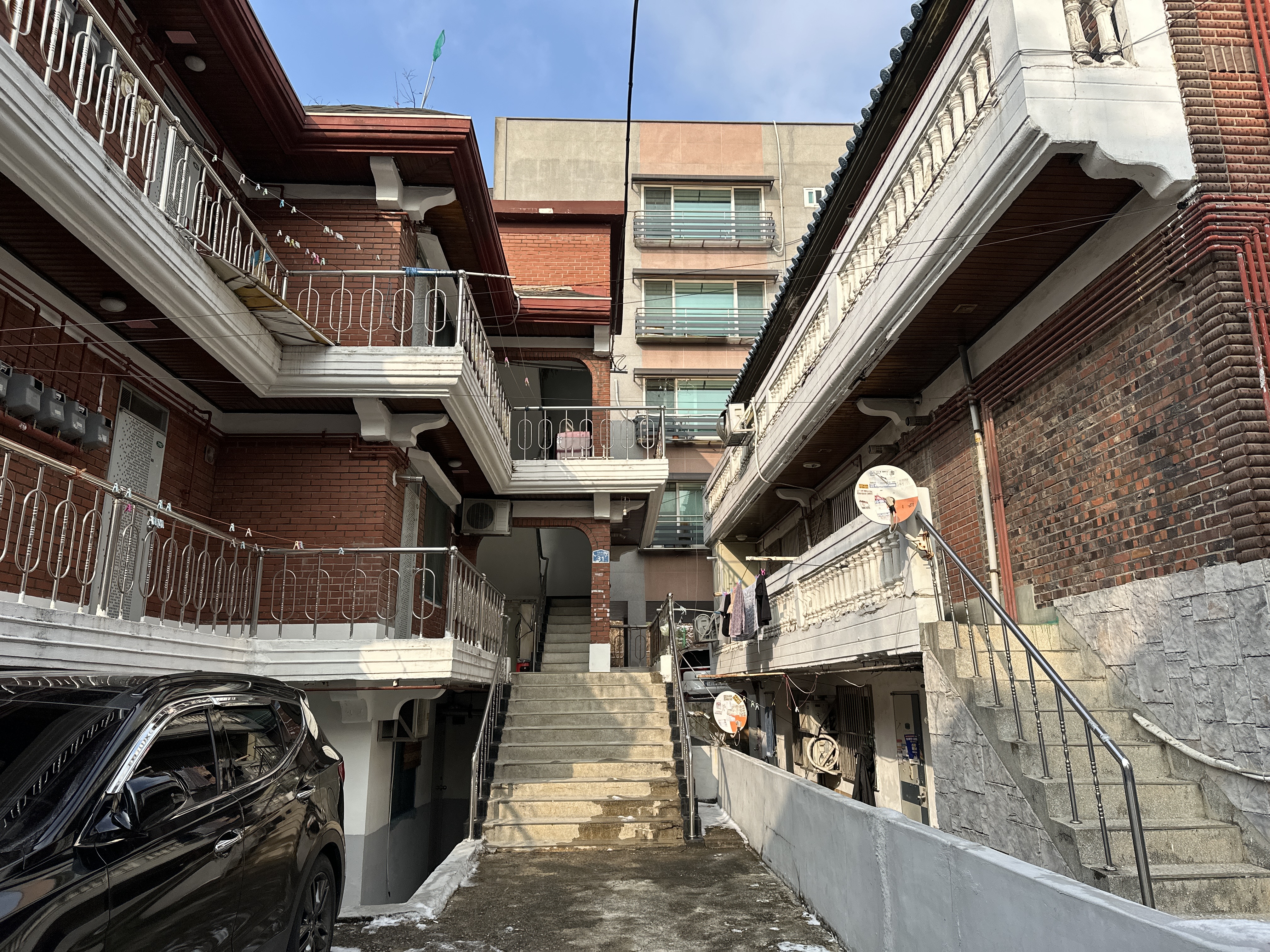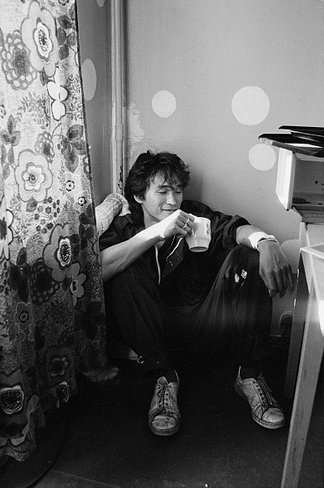|
Pukjai
''Pukjai'' () or ''bukjai'' (Koryo-mar: ; ; ) is a soybean stew dish in Koryo-saram cuisine. It is a descendent of the Korean dish ''doenjang-jjigae''. The dish uses soybean paste (''jai''; ; ) as the base flavoring for the broth. Various ingredients are then added to the base stew. Koryo-saram are Koreans of the former Soviet Union. They have a cuisine descended from the Korean peninsula and influenced by the regions they have lived in. They primarily descend from Korean populations in the North Hamgyong Province, and as such their language and cuisine is influenced by that region. The word ''pukjai'' descends from the term ''bukjang'' ( 북장), which was the term for the North Hamgyong-style ''doenjang''. In one restaurant in the return migration enclave Ttaetgol Village in Ansan, South Korea, the soup contained tomatoes, cabbage, and a whole egg. This would be considered unusual for South Korean ''doenjang-jjigae''. See also * ''Siryak-tyamuri ''Siryak-tyamuri'' (; ) ... [...More Info...] [...Related Items...] OR: [Wikipedia] [Google] [Baidu] |
Koryo-saram Cuisine
Koryo-saram are ethnic Koreans of the Post-Soviet states, former Soviet Union. They have a distinct style of cuisine that is descended from Korean cuisine and influenced by the cuisines of various countries they have lived in. They are often considered distinct from Sakhalin Koreans, another Korean group from the former Soviet Union Sakhalin Korean cuisine, that has their own cuisine. The cuisine has achieved significant popularity throughout the former Soviet Union, with dishes like ''morkovcha'' widely available in grocery stores. However, to the reported surprise of some visitors from Russia, the cuisine is virtually unknown in South Korea. It is also considered by some to differ from South Korean cuisine significantly, especially as it descends primarily from the cuisine of regions now in North Korea. Description Of Korean regional cuisines, Koryo-saram cuisine is most closely related to that of the Hamgyong Province, Hamgyong provinces, now in North Korea. This is because ... [...More Info...] [...Related Items...] OR: [Wikipedia] [Google] [Baidu] |
Siryak-tyamuri
''Siryak-tyamuri'' (; ) or ''sirak-jangmul'' (Koryo-mar: 시락장물; ; ) is a stew in Koryo-saram cuisine that uses fermented soybean paste ('' jai''; 자이; ) as the primary flavorant for the broth. It is a descendent of the Korean dish ''siraegi'' ''doenjang-guk'', and prominently features ''siraegi'', dried radish stems. The dish is considered a staple for Koryo-saram, leading one journalist to remark that the Korean people can survive on just lettuce, ''doenjang'', and rice. One Koryo-saram interviewed in Kazakhstan reported that local Kazakhs and Russians called the dish "Korean soup" (). She also reported that local non-Koreans also enjoyed the soup. The dish has been used as a metaphor for Koryo-saram identity, and its similarity to ''siraegi doenjang-guk'' has also made it a metaphor for shared culture between Koryo-saram and South Koreans. It is known to be consumed in Koryo-saram enclaves in South Korea, including Ttaetgol Village. It has also been served as ceremoni ... [...More Info...] [...Related Items...] OR: [Wikipedia] [Google] [Baidu] |
Soviet Central Asia
Soviet Central Asia () was the part of Central Asia administered by the Russian SFSR and then the Soviet Union between 1918 and 1991, when the Central Asian Soviet republics declared independence. It is nearly synonymous with Russian Turkestan in the Russian Empire. Soviet Central Asia went through many territorial divisions before the current borders were created in the 1920s and 1930s. Administrative divisions Former divisions Turkestan Autonomous Soviet Socialist Republic By the end of the 19th century, Russian tsars effectively ruled over most of the territory that later would constitute Soviet Central Asia. Russia annexed Lake Issyk Kul in north east Kyrgyzstan from China in the early 1860s, lands of Turkmens, Khanate of Khiva, Emirate of Bukhara in the second half of 1800s. Emerging from the Russian Empire following the Russian Revolution of 1917 and the Russian Civil War of 1918–1921, the USSR was a union of several Soviet republics, but the synecdoche Russia � ... [...More Info...] [...Related Items...] OR: [Wikipedia] [Google] [Baidu] |
Soviet Cuisine
Soviet cuisine, the common cuisine of the Soviet Union, was formed by the integration of the various national cuisines of the Soviet Union, in the course of the formation of the Soviet people. It is characterized by a limited number of ingredients and simplified cooking. This type of cuisine was prevalent in canteens everywhere in the Soviet Union. It became an integral part of household cuisine and was used in parallel with national dishes, particularly in large cities. Generally, Soviet cuisine was shaped by Soviet eating habits and a very limited availability of ingredients in most parts of the USSR. Most dishes were simplifications of French, Russian, Austro- Hungarian cuisines, and cuisines from other Eastern Bloc nations. Caucasian cuisines, particularly Georgian cuisine, contributed as well. To a significant extent it was reflected in and formed by '' The Book of Tasty and Healthy Food'', first printed in 1939, following the directions of Anastas Mikoyan. See also * ... [...More Info...] [...Related Items...] OR: [Wikipedia] [Google] [Baidu] |
Russian Soups
Russian cuisine is a collection of the different dishes and cooking traditions of the Russian people as well as a list of culinary products popular in Russia, with most names being known since pre-Soviet times, coming from all kinds of social circles. History The history of Russian cuisine was divided in four groups: Old Russian cuisine (9th to 16th century), Old Moscow cuisine (17th century), the cuisine that existed during the ruling of Peter and Catherine the Great (18th century), and finally Petersburg cuisine, which took place from the end of the 18th century to the 1860s. In the Old Russian period, the main food groups were bread, grains, and other foods that contained starch. Women baked pies with many different fillings, such as mushrooms or berries. During gatherings, a loaf of bread and salt was always present. Kasha, such as buckwheat and oats, were represented as wellbeing to the household. Many Russians used honey and berries and made them into gingerbread, wh ... [...More Info...] [...Related Items...] OR: [Wikipedia] [Google] [Baidu] |
Korean Soups And Stews
Korean may refer to: People and culture * Koreans, people from the Korean peninsula or of Korean descent * Korean culture * Korean language **Korean alphabet, known as Hangul or Korean **Korean dialects **See also: North–South differences in the Korean language Places * Korean Peninsula, a peninsula in East Asia **North Korea **South Korea Other uses *Korean Air, flag carrier and the largest airline of South Korea See also *Korean War, 1950-present war between North Korea and South Korea; ceasefire since 1953 *Names of Korea, various country names used in international contexts *History of Korea The Lower Paleolithic era on the Korean Peninsula and in Manchuria began roughly half a million years ago. Christopher J. Norton, "The Current State of Korean Paleoanthropology", (2000), ''Journal of Human Evolution'', 38: 803–825. The earl ..., the history of Korea up to 1945 * {{disambiguation Language and nationality disambiguation pages ... [...More Info...] [...Related Items...] OR: [Wikipedia] [Google] [Baidu] |
Ansan
Ansan (, ) is a city in Gyeonggi Province, South Korea. It lies southwest of Seoul and is part of the Seoul Metropolitan Area. It is connected to Seoul by rail via Seoul Subway Line 4. It is situated on the Yellow Sea coast and some islands lie within its jurisdiction. The largest and best-known of these is Daebu Island. Several higher learning institutions are located in Ansan. They include Ansan University, Shin Ansan University, Seoul Institute of the Arts, the ERICA campus of Hanyang University, and the Seoul Institute of the Arts. The Korea Transportation Safety Authority, a government agency, has also been headquartered in Ansan since June 3, 2002.Home page Korea Transportation Safety Authority. Retrieved on June 9, 2009. With its high number of foreign workers, Wongokbon-dong has been designated as a multicultural area. In 2021, Ansan was sel ... [...More Info...] [...Related Items...] OR: [Wikipedia] [Google] [Baidu] |
Ttaetgol Village
Ttaegol Village (), alternatively Ddaetgol Village, is an enclave of Koryo-saram (ethnic Koreans of the mainland Post-Soviet states, former Soviet Union) in Seonbu-dong, Danwon District, Ansan, Gyeonggi Province, South Korea. In Russian, the area goes by Ttekkol Samgori (), where "samgori" () is Korean for "three-way intersection". Around August 2022, around 7,000 people in the village were Koryo-saram. Along with Gwangju Koryoin Village, it is one of the largest Koryo-saram enclaves in the country. By August 2022, 12% of the total population of Ansan was of foreign nationality. There is another Koryo-saram enclave in Ansan, which is located in Sangnok District. In August 2022, the total Koryo-saram population in Ansan was around 18,000. Etymology The village was once called Tti Village (), where ''tti'' is the Korean name for grass of the species ''Imperata cylindrica''. The pronunciation of the village's name drifted over time until it became its current form. History Ear ... [...More Info...] [...Related Items...] OR: [Wikipedia] [Google] [Baidu] |
North Hamgyong Province
North Hamgyong Province (Hamgyŏngbukdo, ) is the northernmost province of North Korea. The province was formed in 1896 from the northern half of the former Hamgyong Province. Geography The province is bordered by China (Jilin) to the north, South Hamgyong to the southwest and Ryanggang to the west. To the east is the Sea of Japan. The province is home to the Musudan-ri rocket launching site and the Hoeryong concentration camp. In 2004, Rason was reabsorbed back into the province and since 2010, Rason has been a special city of North Korea. Economy In critical studies of North Korea, North Hamgyong has a reputation as a neglected and underdeveloped region even by the country's standards. It was where the 1990s famine hit hardest, and food shortages persist even in the 2020s. The majority of North Korean defectors who live in South Korea came from the province after crossing the relatively shallow Tumen River into China. Therefore, the conditions of the province, which a ... [...More Info...] [...Related Items...] OR: [Wikipedia] [Google] [Baidu] |
JoongAng Ilbo
''The JoongAng'', formerly known as ''JoongAng Ilbo'' (), is a South Korean daily newspaper published in Seoul, South Korea. It is one of the three biggest newspapers in South Korea, and a newspaper of record for South Korea. The paper also publishes an English edition, ''Korea JoongAng Daily'', in alliance with the ''International New York Times''. It is often regarded as the holding company of JoongAng Group ''chaebol'' (a spin-off from Samsung) as it is owner of various affiliates, such as the broadcast station and drama producing company JTBC, and movie theatres chain Megabox. History It was first published on September 22, 1965, by Lee Byung-chul, the founder of Samsung Group which once owned the Tongyang Broadcasting Company (TBC). In 1980, ''JoongAng Ilbo'' gave up TBC and TBC merged with KBS. ''JoongAng Ilbo'' is the pioneer in South Korea for the use of horizontal copy layout, topical sections, and specialist reporters with investigative reporting teams. Since Apri ... [...More Info...] [...Related Items...] OR: [Wikipedia] [Google] [Baidu] |
Koryo-saram
Koryo-saram (; ) or Koryoin () are ethnic Koreans of the post-Soviet states, former Soviet Union, who descend from Koreans that were living in the Russian Far East. Koreans first began settling in the Russian Far East in the late 19th century. Their numbers increased as Koreans fled the Korea under Japanese rule, Japanese colonization of Korea beginning in 1910. A number of Koryo-saram became significant List of Korean independence activists, Korean independence activists, such as Hong Beom-do and Chŏng Sangjin. In 1937, Deportation of Koreans in the Soviet Union, they were all deported to Central Asia. They have since dispersed throughout the former Soviet Union, with significant populations in Siberia, Uzbekistan, and Kazakhstan. Approximately 500,000 Koryo-saram reside in the former Soviet Union, primarily in the now-independent states of Central Asia. There are also large Korean communities in Southern Russia (around Volgograd), the Russian Far East (around Vladivostok), th ... [...More Info...] [...Related Items...] OR: [Wikipedia] [Google] [Baidu] |





